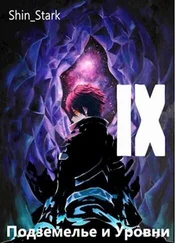At the far end of the room hung two thirteen-foot-tall sheets of cloth, mounted at right angles to each other, that displayed perfect digital images of, respectively, the front and back of “The Unicorn in Captivity.” We walked up to the two pictures of the unicorn. First I looked at the front. I could see each thread clearly. The unicorn is spattered with droplets of red liquid that seems to be blood, although it may be pomegranate juice dripping from fruit in the tree. The threads in the droplets of blood are so deftly woven that they create an illusion that the blood is semitransparent. The white coat of the unicorn shines through.
Then I turned to the back of the tapestry. Here the droplets were a more intense red, with clearer highlights, and they seemed to jump out at the eye. The leaves of the flowers were a vibrant, plantlike green. (There are as many as twenty species of flowers in this tapestry. They are depicted with great scientific accuracy—greater than in any of the botany textbooks of the time. They include English bluebells, oxlip, bistort, cuckoopint, and Madonna lily. Botanists haven’t been able to identify a few; it’s possible that they are flowers that have gone extinct since 1500.) On the front, in contrast, the yellow dye in the green leaves has faded a bit, leaving them looking slightly bluish gray.
Gregory got up from the couch. David warned him to be careful, and he put his arm around Gregory’s waist, while Gregory leaned on David and put his arm over David’s shoulders. Then the Chudnovsky Mathematician moved slowly across the floor, until the brothers were standing (rather precariously) beside It. David explained that their image of the tapestry was a first step toward making even finer digital images of works of art. He said, “It’s simple to take a picture of a Vermeer, but what you really want is an image of the painting in 3-D, with a resolution better than fifty microns”—that’s about half the thickness of a human hair. “Then you can see the brushstrokes,” he went on, raising his voice over the whirring of the fans inside It. “You can catalog the brushstrokes in the sequence they occurred, as they were laid down on top of one another.”
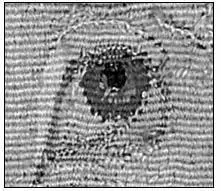
The eye of the unicorn, in reverse, on the back side of the tapestry. Detail from “The Unicorn in Captivity,” South Netherlandish, ca. 1495–1505. Wool warp, wool, silk, silver, and gilt wefts; 12 ft. 1 in. × 99 in. (368 cm. × 251.5 cm.). The Metropolitan Museum of Art, gift of John D. Rockefeller, Jr., 1937 (37.80.6).
Image © Metropolitan Museum of Art
When mathematicians work, they engage in intensely serious play. They follow their curiosity into problems that interest them. After playing with the unicorn, the Chudnovskys moved on.
“What are you doing now?” I asked.
David told me that they were working with IBM to design what may be the world’s most powerful supercomputer. The machine, code-named C64, was being built for a United States government agency.
Among their projects, the Chudnovskys seemed to be involved with something called dark mathematics. Dark mathematics is classified mathematics. It’s mathematics with national security implications that is done for government agencies. It isn’t published in journals. Dark mathematics involves things like codes.
The superpowerful Chudnovskian C64 was rather like It, multiplied many times over, though nothing in C64 would come from Home Depot. When the government machine was finished, it would contain two million processors and fourteen thousand hard drives. It would use two and a half million watts of electricity—enough to power a few thousand homes. Two thousand gallons of water per minute would flow through the core of C64 to keep it cool. If the pumps failed, it would melt down in less than ten seconds.
* * *
ONE DAY, I went to see the Unicorn Tapestries in the physical universe, as distinct from the universe of numbers. It was a quiet winter afternoon at the Cloisters. The gallery where the tapestries hang was almost deserted. When I looked at them, each flower and plant, each animal, each human face took on a character of its own. The tapestries were alive with color and detail, full of velvety pools and shimmering surfaces. In the fence that surrounds the captive unicorn, tarnished silver, mixed with gold, gleamed in the grain of the wood. In comparison, the digital images, good and accurate as they were, had seemed flat. They had not captured the translucent landscape of the Unicorn Tapestries, as the weft threads dive around the warp, or the way they seemed to open into a world beyond the walls of the room.
Timothy Husband, the curator of the Cloisters, walked in. He was a tall, polished man in his late fifties, and had been at the Cloisters for thirty-five years. We sat down in one of the window seats facing the tapestries. “There is a luminosity and depth in them,” he said quietly. “It didn’t come about by chance on the part of the weavers.”
I asked Husband how he felt when he was alone with the tapestries.
“That happens on Mondays, when the Cloisters is closed,” he said. He spends anywhere from a minute to an hour with the tapestries. “It can be an exceedingly frustrating experience. One ponders so many questions about the tapestries for which there are no more answers today than there were when I was in graduate school.” In some of the scenes, the unicorn may represent Christ. Alive and chained to the tree, after its apparent death in the hunt, it may speak of the immortality of the soul. Or the drops of blood may represent the pains of love. The truth is that the modern world has lost touch with the meanings in the Unicorn Tapestries. “Sometimes I come in here and try to pretend I have never read anything about them, never heard anything about them, and I just try to look at them,” Husband said. “But it’s not easy to shed that baggage, is it? And my other reaction, sometimes, is just to say, ‘To hell with it, someday someone will figure them out.’ And then there is a solace in their beauty, and one can stare at them in pure amazement.”
ONE DAY IN SEPTEMBER 1962, a woman who here will be called Deborah Morlen showed up at the pediatric emergency room of the Johns Hopkins Hospital, in Baltimore, carrying her four-and-a-half-year-old son, Matthew. He was spastic and couldn’t walk or sit up. As an infant, he had been diagnosed with cerebral palsy and developmental retardation. The hospital’s pediatric emergency room was in the Harriet Lane Home for Invalid Children, an old brick building that stood in the center of the Johns Hopkins complex. Deborah Morlen sat down on a wooden bench in the waiting room. Her son lay stretched across her lap. He couldn’t hold his head up, and his arms and legs thrashed around. His eyes were bright and restless. He was wearing mittens, though it was a hot day. Deborah Morlen had fastened the mittens tightly around his wrists with string, to keep them from falling off.
Eventually, a resident named Nancy Esterly saw Matthew in an examination booth, where she asked Deborah Morlen what was wrong.
Mattey was putting out strange-colored urine, Morlen told Esterly. “And there’s, like, sand in his diaper,” she said.
Nan Esterly removed the boy’s diaper. It was stained a deep, bright orange, with a pink tinge. She touched the cloth and felt grit. She had no idea what this was, except that the pink looked like blood.
She began asking questions of Deborah Morlen, getting the boy’s history. She eventually learned that Matthew had an older brother, Harold, who was also spastic and retarded, and also had had orange sand in his diapers. Harold was living at the Rosewood State Hospital, an institution for disabled children, outside Baltimore, while Matthew was living at home.
Читать дальше
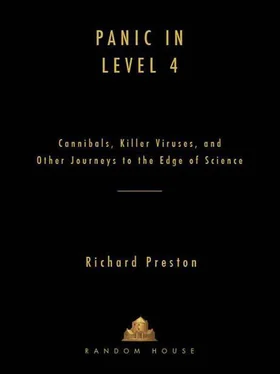


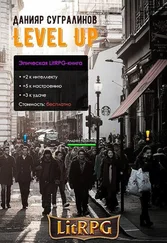



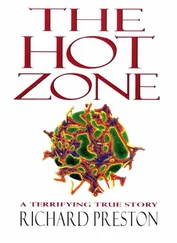

![Shin_Stark - В подземелье я пойду, там свой level подниму X [СИ]](/books/384602/shin-stark-v-podzemele-ya-pojdu-tam-svoj-level-po-thumb.webp)
